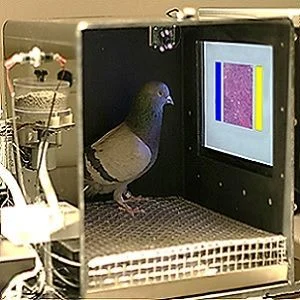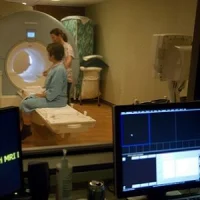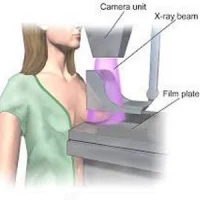Pigeons are known to share many visual system properties with humans. Their visual memory is also outstanding, as they can recall more than 1,800 images. Now a new study demonstrates that the birds also have the ability to distinguish between benign and malignant breast histology and radiology. The animal behavioural study is published in the open-access journal PLOS ONE.
Pathologists and radiologists spend years acquiring and refining their medically essential visual skills. To better understand these skills, researchers trained several cohorts of pigeons to view and identify benign and malignant histopathology and radiology images in a series of experiments.
After training with differential food reinforcement and controlling for various parameters, including image magnification, compression, and colour and brightness, the birds quickly learned to distinguish benign from malignant human breast histopathology. Notably, the pigeons were able to generalise what they had learned to novel image sets.
"We found pigeons to be remarkably adept at several medical image classification tasks. They quickly learned to distinguish benign from malignant breast cancer histopathology at all magnifications, a task that can perplex inexperienced human observers who typically require considerable training to attain mastery, although the examples shown are easily classified by a trained pathologist," write Richard Levenson, MD, FCAP, University of California Davis Medical Center, and co-authors.
The birds' histological accuracy, similar to humans, was slightly affected by the presence or absence of colour, as well as by degrees of image compression, but the authors suggest these impacts could be altered with further training.
In radiology, the birds were similarly capable of detecting cancer-relevant microcalcifications on mammogram images. However, when given a different task — namely, classification of suspicious mammographic densities — the pigeons were only able to memorise the images and were not able to generalise to novel images.
According to the research team, the birds' successes and difficulties suggest that pigeons may be well-suited to help scientists better understand human medical image perception, and may also prove useful in performance assessment and development of medical imaging hardware, image processing, and image analysis tools.
"Future studies in which birds are exposed to images in which certain low-level pixel-based features are either emphasised or suppressed could help pinpoint which properties contribute most to detection or classification performance," the authors write. "Such studies might also indicate how best to process and present medical images to human observers for maximal saliency, as well as motivate future machine-learning strategies."
Source and image credit: PLOS ONE
Pathologists and radiologists spend years acquiring and refining their medically essential visual skills. To better understand these skills, researchers trained several cohorts of pigeons to view and identify benign and malignant histopathology and radiology images in a series of experiments.
After training with differential food reinforcement and controlling for various parameters, including image magnification, compression, and colour and brightness, the birds quickly learned to distinguish benign from malignant human breast histopathology. Notably, the pigeons were able to generalise what they had learned to novel image sets.
"We found pigeons to be remarkably adept at several medical image classification tasks. They quickly learned to distinguish benign from malignant breast cancer histopathology at all magnifications, a task that can perplex inexperienced human observers who typically require considerable training to attain mastery, although the examples shown are easily classified by a trained pathologist," write Richard Levenson, MD, FCAP, University of California Davis Medical Center, and co-authors.
The birds' histological accuracy, similar to humans, was slightly affected by the presence or absence of colour, as well as by degrees of image compression, but the authors suggest these impacts could be altered with further training.
In radiology, the birds were similarly capable of detecting cancer-relevant microcalcifications on mammogram images. However, when given a different task — namely, classification of suspicious mammographic densities — the pigeons were only able to memorise the images and were not able to generalise to novel images.
According to the research team, the birds' successes and difficulties suggest that pigeons may be well-suited to help scientists better understand human medical image perception, and may also prove useful in performance assessment and development of medical imaging hardware, image processing, and image analysis tools.
"Future studies in which birds are exposed to images in which certain low-level pixel-based features are either emphasised or suppressed could help pinpoint which properties contribute most to detection or classification performance," the authors write. "Such studies might also indicate how best to process and present medical images to human observers for maximal saliency, as well as motivate future machine-learning strategies."
Source and image credit: PLOS ONE
References:
Levenson RM et al. (2015) Pigeons (Columba livia) as Trainable Observers of Pathology and Radiology Breast Cancer Images. PLoS ONE, November 18,
2015. 10(11): e0141357. doi: 10.1371/journal.pone.0141357
Latest Articles
healthmanagement, breast cancer, radiology, pigeons, pathology, visual skills, image processing
Pigeons share many visual system properties with humans. Their visual memory is also outstanding, as they can recall more than 1,800 images. Now a new study demonstrates that the birds also have the ability to distinguish between benign and malignant brea










